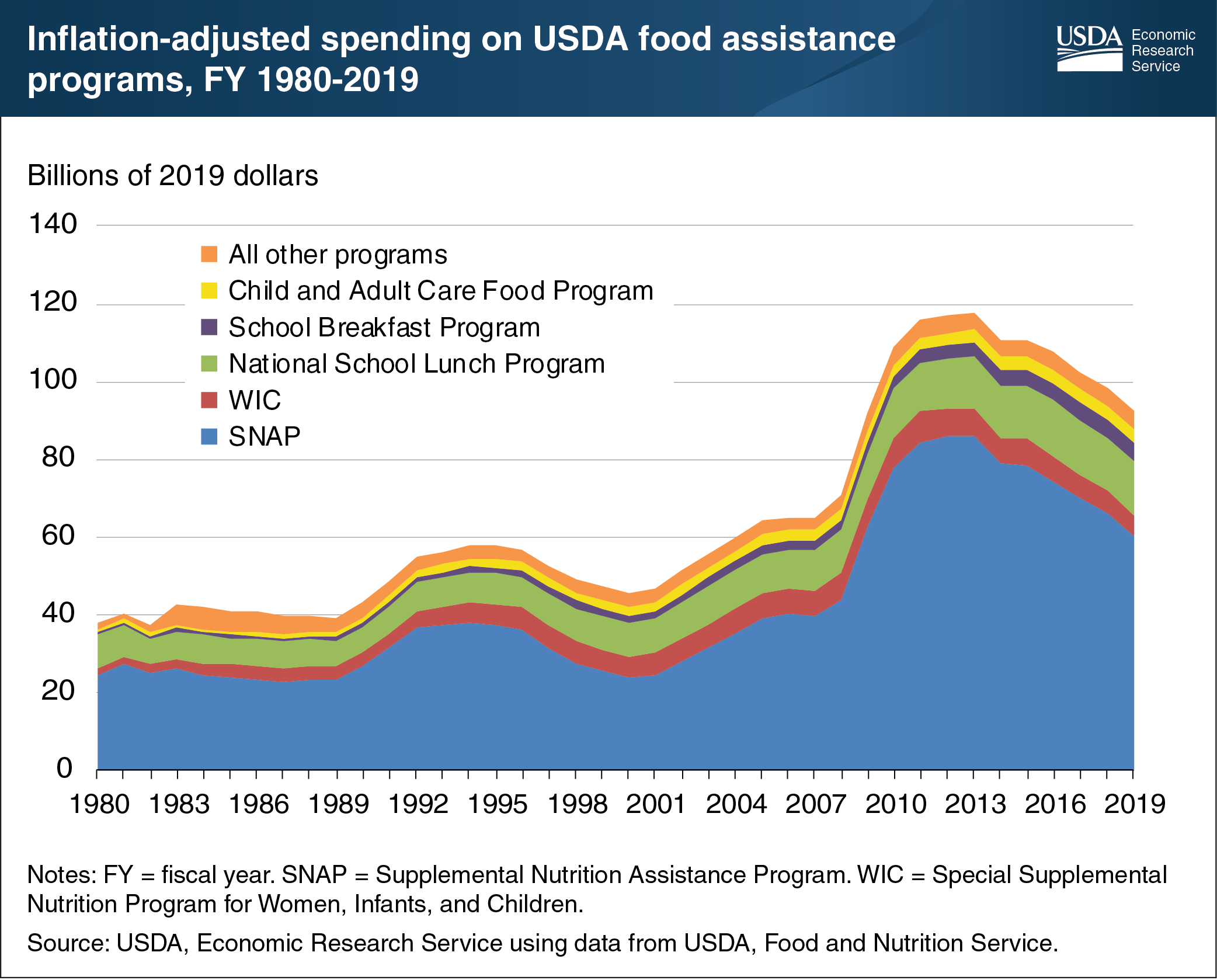Federal spending on food assistance in fiscal year (FY) 2019 at lowest level since FY 2009
- by Laura Tiehen
- 8/21/2020

USDA administers 15 domestic food and nutrition assistance programs that together form a nutritional safety net for millions of children and low-income adults. Federal expenditures on these programs totaled $92.4 billion in fiscal year (FY) 2019, their lowest level since FY 2009 and 22 percent less than the inflation-adjusted historical high of $117.9 billion set in FY 2013. The decline in spending between 2013 and 2019 was likely largely due to continued improvement in the U.S. economy, as the unemployment rate declined from 7.4 to 3.7 percent over that time period. Spending for the Supplemental Nutrition Assistance Program (SNAP), which accounted for almost two-thirds (65.3 percent) of Federal food and nutrition assistance spending in FY 2019, totaled $60.4 billion, or 8 percent less than in FY 2018 and 30 percent less than the inflation-adjusted historical high of $86.3 billion set in FY 2013. Expenditures fell for both SNAP and the Special Supplemental Nutrition Program for Women, Infants, and Children (WIC) between FYs 2018 and 2019, but increased between 2 and 3 percent for each of the three largest child nutrition programs—the National School Lunch Program, the School Breakfast Program, and the Child and Adult Care Food Program. A version of this chart appears in the Economic Research Service report, The Food Assistance Landscape: Fiscal Year 2019 Annual Report, July 2020.

